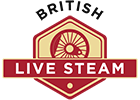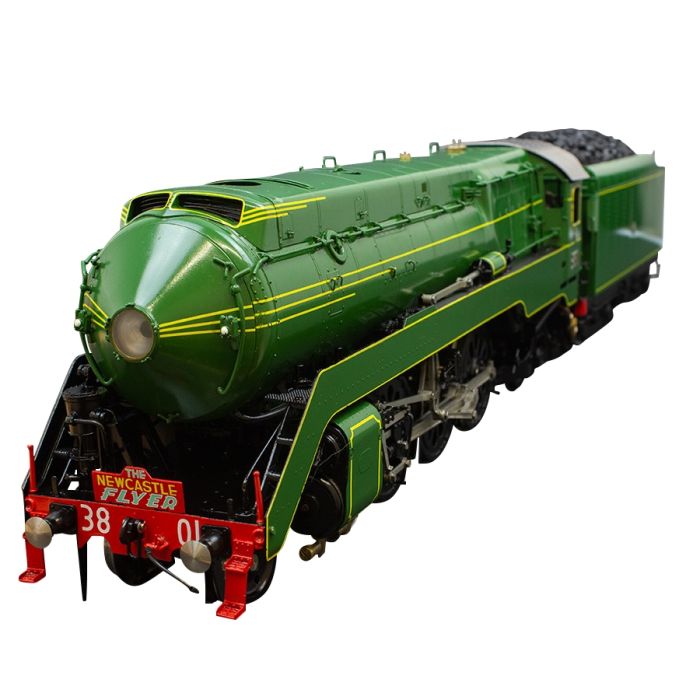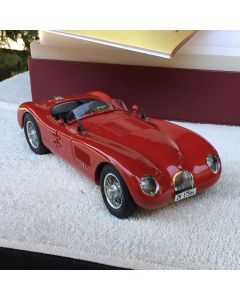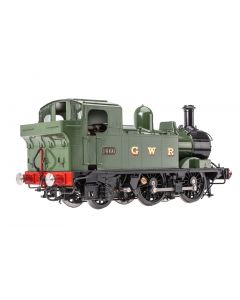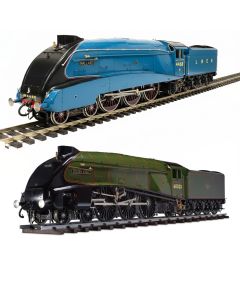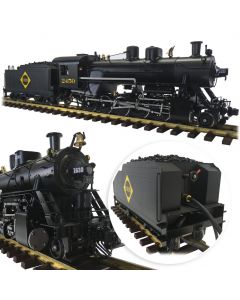Gauge 1, NSWGR 3801
This is the very last 3801 of the production batch with no future production of this model planned.
This very special locomotive has also been pre-fitted with radio control equipment.
If you have ever dreamed of owning your own live steam locomotive then this iconic Australian steam engine is the one for you! Contact us to arrange your order.
The NSWGR 3800 class otherwise known as the C38 or the Newcastle Flyer. The 3800 was a class of steam locomotive built between 1943 and 1949 for the New South Wales Government Railways. We have on offer the butane fired, gauge 1 (45mm) live steam locomotive which is produced in a beautiful level of detail. This model is currently in stock and available for immediate delivery. Don't miss out as these models are produced in limited runs with only a handful being released annually.
Available livery
Available in green livery
See below for full specifications
Payment plans available
NSWGR 3800 Class, The C38 Newcastle Flyer!
- Scale:1/32
- Wheel configuration: 4-6-2
- Cylinder diameter & stroke: 14.2mm * 20.6mm
- Diameter of driving wheels: 57mm including flange
- Diameter of boiler: 54mm
- Fuel: Butane gas
- Burning System: Ceramic
- Valve gear: Walschaerts
- Brass contstruction
- Working head lamp with separate switch
- Axle water pump with bypass valve
- Water hand pump with check valve
- Water gauge with drain valve
- Adjustable safety valves (first working safety valve pops at 60-65PSO)
- (Second working safety vavle pops at 75-80PSI)
- Working whistle
- UK Imported pressure gauge
Liveries
Available in green livery only.
The 3801 Class Newcastle Flyer
The Newcastle Flyer was a passenger express train that operated in Australia. Starting in November 1929 and continuing on service until April 1988, the Newcastle Flyer linked the two biggest cities in New South Wales, Newcastle and Sydney. The journey it made on a regular basis was 168 kilometres long and this journey was made three times per day in each direction. It travelled along the Short North line. It truly revolutionised transportation methods in Australia and its introduction remains a railway milestone to this day.
Origins and Early Decades
Although the Newcastle Flyer wouldn’t become operative until four decades later, the first trains travelling between Newcastle and Sydney began in 1889 on May 1st. The Newcastle Flyer arrives with the introduction of a premier express service, which also coincided with the completion of the Pacific Highway along Australia’s central east coast.
The first two train services of this kind were named the Inter City Express and the Northern Commercial Limited. Tackling that 168 kilometre journey took these trains 2 hours and 45 minutes each time. To start with, 32 class locomotives were used to haul them. L carriages that had already been in commission for a number of years were refurbished and painted red and cream, later switching to a maroon colour in 1933.
A year later in 1934, the 36 class locomotives were introduced for the first time. 1936 was when the Northern Commercial Limited trains had their name changed to the Newcastle Express. The next year, there was a non-stop service added for the first time; this took 2 hours and 20 minutes to complete per journey. In 1939, an NCR rolling stock was brought into affect and a diesel rolling stock called called Silver City Comet had to be used because of a miners strike in 1940.
Speed Record
In June 1964, there was an attempt to break the rail record for the Sydney to Newcastle journey. As part of this record attempt, a Newcastle Flyer was hauled by a 3801 steam locomotive. It managed to set a new record with a time of 2 hours 1 minute and 51 seconds. Only congestion stopped it from finishing under the 2 hour mark.
38 Class Steam Locomotives in Service
The 38 class of steam locomotives is the class that many people associate most strongly with the Newcastle Flyer. They were designed and built specifically for the New South Wales railways. They were first built in 1943 and ran on coal.
February 1943 was the first time a 3801 was used on a Newcastle Flyer service. By the end of 1947, all Newcastle Flyer services were operated by the locomotives. The 3820 was the last steam powered locomotive to haul the Newcastle Flyer when it ended in 1970.
Diesel and Electric Trains
Diesel locomotives started to be used sporadically in the mid-1950s to haul the Newcastle Flyer. However, the 38 class was still the primary option when it came to motive power for the Newcastle Flyer. Diesel power didn’t gain real dominance on the Australian railways until 1970.
The Newcastle Flyer eventually began to use the 86 class, and this began in 1984. The line to Newcastle was electrified by this point, allowing the Newcastle Flyer to use the electrified 86 class. So from June 1984 onwards, the service was mostly electrified with the 46 class used only occasionally.
Decline of the Newcastle Flyer
After electrification became the norm in New South Wales, the V Sets started to be used. These were a class of trains made from stainless steel and a double decker structure, as well as being fully electrified. The problem for the Newcastle Flyer was that the V Sets were both faster and more comfortable for passengers, so it was no real surprise when the V Sets took over and replaced the Newcastle Flyer.
Demand for the Newcastle Flyer continued to fall throughout the 1980s. By 1987, the Newcastle Flyer was only used for the morning journey to Sydney and a return leg of that same journey in the evening. Even those trips were replaced by V Sets services in 1988, marking the end of the Newcastle Flyer’s run offering regular services to railway passengers.
Preservation and Heritage
Numerous tours of the Newcastle Flyers have occurred to celebrate this iconic train and to mark specific anniversaries in its history. The most recent and final special journey made by a Newcastle Flyer was in 2014. These special heritage event allowed people to experience the Newcastle Flyer who might never have had the opportunity otherwise.
Buy from a trusted Australian seller

Fastest Delivery
Fast delivery anywhere in the World with local stock dispatched same day!

Outstanding Quality
All of our trains are produced to a high quality standard and include warranty.

Australian Seller
Real Aussie enthusiests selling premium quality products.
